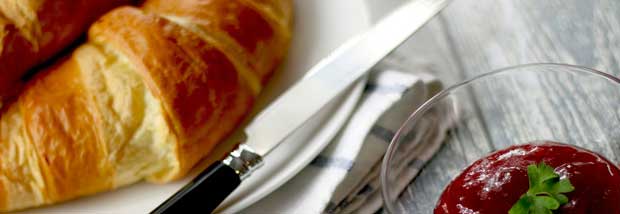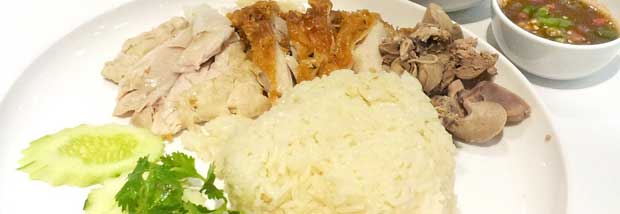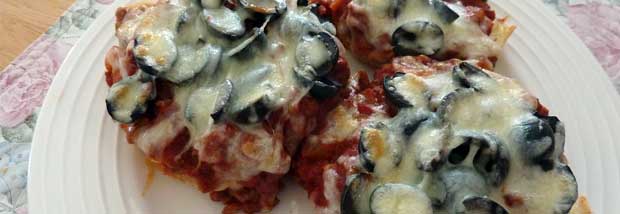Breakfast is the most important meal of the day and sitting down to enjoy a piping hot, freshly prepared fry-up is always a treat.
The Full English is a winning combination of eggs, sausage, bacon, a nice scoop of beans, grilled tomatoes, mushrooms on the side along with a crisp piece of fried bread. Or, maybe even some potatoes and black or white pudding. It’s hearty, tasty and is just the thing to set you right at any time of day.
However, there’s a lot of different ways to start the day off, and all around the globe, there’s a colourful variety of traditional breakfasts to be found.
 Argentinean Breakfast
Argentinean Breakfast
Argentines prefer to avoid large breakfasts. The traditional breakfast in Argentina, or the Desayuno Argentino, is a simple meal that includes traditional pastries served with coffee, orange juice, or mate.
Mate is an infusion made from yerba mate and boiling water. This drink has long been consumed by the indigenous people and is an important aspect of Argentinian culture. It is not only an excellent beverage at breakfast time, but is regularly shared with family and friends during casual get-togethers.
The cuisine of Argentina is a unique fusion of European and Andean influences, and this is reflected well in their breakfasts. Medialunas are bow tie-shaped pastries with a taste and texture much like a brioche. Another option is the bizcocho, a buttery layered biscuit that is crusty on the outside, but soft and fluffy inside.
Many locals will make a quick stop at the neighbourhood panaderia, or bakery, to pick up a dozen facturas. These little pastries are available in several varieties; some are deep fried while others are baked. They are topped with different things such as dulce de leche, egg custard, quince paste, or brown sugar.
Some varieties of facturas are reminiscent of churros from Spain, and others more like a French millefeuille or German berliner, making them a perfect example of Argentina’s multicultural influences.
 French Breakfast
French Breakfast
Much like their Italian neighbours, the French shun salty food in the mornings, preferring to keep breakfast short and sweet.
Breakfast in France is referred to as petit déjeuner, which literally means ‘little lunch’. Since lunch and dinner are large meals that can last for hours, they like to keep breakfast small and quick.
A traditional petit déjeuner consists of tartine, which is simply a piece of toast or bread, quite often a baguette with jam, butter or Nutella. The French verb ‘tartiner’ means ‘to spread’.

On weekends, they might indulge in a pain au chocolat, a flaky pastry filled with dark chocolate, or a chausson aux pommes, a flaky pastry that is the French version of an apple turnover.
Often, a traditional French breakfast will be a tiny meal of a croissant and cup of coffee or tea. At breakfast, coffee, tea or hot chocolate is typically drunk from bowls, which better serve for dunking a tartine.
 German Breakfast
German Breakfast
Breakfast in Germany, or das Frühstück, resembles both a continental breakfast and a nice deli tray. A selection of different cheeses and meats such as salami or ham sit alongside muesli, fruit, or soft-boiled eggs.
Various sausages, such as liverwurst, schlackwurst, a type of German salami, or other wurst, may also be found on the breakfast table. Sweeter toppings such as marmalade, honey, and jam are also common sides for spooning onto a seedy bread such as a Vollkornbrot, or Laugenstangen, a soft pretzel bread.
All of the above are washed down with one of the German breakfast drinks of choice: coffee, tea, hot chocolate or fruit juice. The trick to a traditional breakfast in Germany is: the more, the better. That’s easy enough to accomplish, since there is not much cooking involved.
In Bavaria, if someone is feeling a bit peckish after breakfast, they might have a second breakfast. Brotzeit, which literally translates to ‘bread time’, this is a savoury late-morning snack usually comprised of pretzels, mustard, wheat beer, white radishes or sausage with bread and cheese.
 Iranian Breakfast
Iranian Breakfast
The staple of a traditional Persian breakfast is bread. A typical breakfast in Iran consists of a variety of flatbreads. Barbari is the thickest of these, named for the Barbars of eastern Iran who invented it. Sangak bread is a whole wheat flatbread that is baked on stones. Lavash is a softer, unleavened bread.
All of these breads pair well a number of items: feta or paneer cheese, cucumber, tomatoes, walnuts or even sweeter toppings such as clotted cream, jam or honey.
Many of the ingredients included in a Persian breakfast are interchangeable, so it’s possible to mix and match while still having a delicious and filling morning meal. Eggs are sometimes served as well, usually in an omelette mixed with tomatoes, onions and fresh herbs.
Most Iranians drink strong, dark tea throughout the day and breakfast is no exception. They enjoy their first piping hot cup of chai first thing in the morning. This is always loose leaf tea with a hint of cinnamon or cardamom spice added. Milk and lemon is never added, but locals will often sweeten their chai with ghand (sugar cubes) or nabaat, pieces of rock candy on a stick for stirring.
 Israeli Breakfast
Israeli Breakfast
The Israeli breakfast was mainly enjoyed by the residents of Kibbutz, Israel. Later, the breakfast was popularized by many other hotels around the world due to its selection of fresh fruits and its yumminess.
Historically, the dish dates back to the 20th Century. The dish has a background with the Kibbutz workers who at the time were working in shifts in fields and dairy farms during early mornings.
The work was quite heavy and demanding, and after a few hours, they would be out of energy, thus they would gather at public halls for breakfast. The breakfast consisted of eggs, bread, milk and some fresh juice. For ages, the dish has evolved to include other contents that vary from one region to the other.
With the evolution of the Israeli hotel industry, the breakfast was turned into an inspirational meal. During the observance of the Kashrut, the Israel breakfast, was non-Kashrut, could be offered to tourists, who were not so keen on observing Kashrut. It included sausages and bacon.
The hotel industry advanced further and began to offer eggs, juice, vegetable salad, bread, fish, and cereals. Granolas, waffles, salads and other baked foods were also offered.
 Italian Breakfast
Italian Breakfast
Much like their Argentinian counterparts, Italians prefer to keep breakfast small. While breakfast in Italy can have some slight variations depending on the region and time of year, the most important part of the Italian breakfast or the prima colazione, is a scalding hot caffè, or a caffè latte, which to English speakers, is simply an espresso, or an espresso with milk.
A caffeine-free option is orzo, a roasted-barley beverage that somewhat resembles a cup of cocoa. A traditional Italian breakfast tends toward the sweet rather than savoury.
The ciambella is basically a doughnut, fried dough pastry rolled in granulated sugar and sometimes stuffed with jam or custard. A cornetto is a small croissant, but with a sweet flavour instead of a buttery one.
A favourite in Italy is breakfast cookies. These crunchy, sugary treats are often dunked in coffee. Years ago, in some rural parts of the country, farmers sometimes drank red wine as a part of their morning meal and dipped their breakfast biscuits into their Chianti. However, this practice seems to have fallen away in modern times!
 Japanese Breakfast
Japanese Breakfast
When having breakfast in Japan, one has the choice of eating a youfuu breakfast, which is a modern, western style meal consisting of things like eggs, coffee, buttered toast or cereal.
For something more authentic and traditional, one would opt for the wafuu breakfast. A typical wafuu breakfast is like a kind of meal that most westerners have never had before, or might think of as a complete meal to be eaten for lunch or dinner.
However, a traditional Japanese breakfast is quite light, and extremely healthy. It starts with gohan (steamed white rice), a small bowl of miso soup, and some type of protein, usually grilled or dried fish but sometimes this can be tofu, or even a raw egg that is beaten and poured over the hot gohan. This is accompanied with tsukemono, a type of Japanese pickle made from daikon, a Japanese radish.
Nori, a dried seaweed, is often served, as well as natto, which are fermented soy beans. Vegetable side dishes, or kobachi, are typical in a wafuu meal, perhaps in the form of a small green salad, green beans, or perhaps some type of fruit. What is of utmost importance in a Japanese breakfast is the freshness of the ingredients, the balance of nutrients, and that there is plenty of hot green tea to go along with it.
 Lebanese Breakfast
Lebanese Breakfast
Breakfast in Lebanon consists of mainly savoury items. Because food is all about sharing in Lebanese culture, breakfast, like all meals, is generally comprised of several dishes to be shared amongst everyone at the table, as opposed to each person having their own dish.
A breakfast favourite in Lebanon is manakish. These small discs of flatbread are covered with a spread of olive oil mixed with za’atar (a blend of sumac, thyme and sesame seeds) and then baked. These little Lebanese pizzas come with a variety of toppings, ranging from eggs, cheese, meat and vegetables, though the classic za’atar variety remains the most popular.
Manakish is so loved in Lebanon, that it’s easy to find a dedicated bakery in every village. Like za’atar and flatbread, yogurt is fundamental to Middle Eastern cuisine. It dates back to ancient Phoenicians and Bedouins and is just as important today.
Labneh is a rich and thick hard yogurt that is made by straining through a muslin and can be found in any Lebanese home.
Foul Mudammas is made by mixing broad beans with garlic, salt, pepper, lemon and olive oil, which is then scooped up with flatbread. All of these with a bit of hummus, cucumber, or tomatoes combine to make one of the heartiest and healthiest breakfasts in the world. Of course, no breakfast in Lebanon would be complete without tea, juice, or Arabic coffee.
 Moroccan Breakfast
Moroccan Breakfast
The Moroccan breakfast is an exquisite African breakfast that consists of a number breads with some jam, chutney, butter or cheese. They make some nice crumpet-style bread that usually results into large slabs, which enables one to tear bits of it. They also have semolina bread known as Bangir, which are very popular among Moroccans because of their taste.
It is with no doubt that the Moroccan breakfast is among the best in the world. Moroccans like eating healthy and feeding their guests with good food as well.
Breakfast in Morocco is outstanding, and the most common meal served is the Khobz. Khobz is served with butter, jam, olives, argan oil and olive oil.
Harch is another cuisine commonly used in Morocco. In terms of taste and structure, it nearly looks like a pancake. M’semen is another pancake-like meal that can supplemented with honey, chocolate, cheese and some vegetable toppings.
The Croissants, Krachel and other pastries also find their way into the Moroccan breakfast, all depending on the one’s preferences.
The Moroccan breakfast isn’t complete without the café au lait or mint tea and freshly squeezed orange juice. Also, the Zhar or orange blossom water can be taken because it goes very well with pastries. The Zhar is also an important accessory in Moroccan cooking, as it gives the food with a sweet delightful smell.
 Spanish Breakfast
Spanish Breakfast
The Spanish breakfast is commonly known as Pan con Tomate or Pan a Catalana. It is a very simple meal that is prepared by rubbing bread with garlic and plenty of tomatoes. A pinch of salt or a drizzle of olive is then added to complete the menu.
For toppings, you can use cheese or sausages. Originally, its main ingredients were bread laced with oil. For example, a slice of bread would be seasoned with olive oil and a little salt added. This was considered a Mediterranean dish with a Greek origin. As early as the 19th Century, the Panbolibo, a recipe book, had the same but without the tomato. According to its history, the dish has both an American and Spanish decent.
The preparation of the meal involves rubbing tomato oil over a slice of bread. The best choice of bread is always the country bread. The bread can either be retained in its original form or roasted before the the spreading of the tomato. Some people prefer garlic to provide that spicy flavour.
In Mallorca, the bread oil is scrubbed with some specific tomatoes known as coriander tomatoes, which are cultivated specifically for the purpose of scrubbing. It can be used as an accompaniment or as a main meal. When used as a mail meal, it is accompanied by cheese, tortilla and sausage. In places such as Mallorca, the accompaniment can be ham, cheese or Mallorcan olives.








